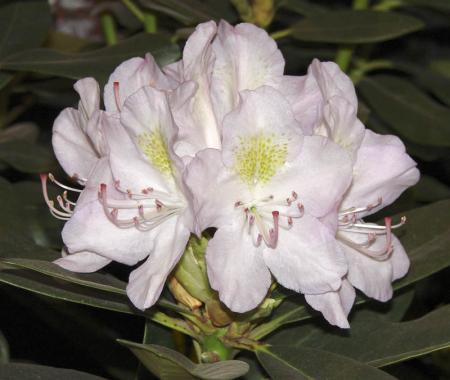 |
Where to grow
Rhododendrons should be planted where some sun is available to encourage bud formation and compact growth. Shelter rhododendrons from strong winds which dry out the foliage, and provide shade during the hottest part of the day. Rhododendrons must be protected from the winter sun. Build a tent of burlap around your rhododendrons and fill the tent with leaves or straw.
Azaleas should be planted in a sunny location but not in a location that is too dry because like rhododendrons, they enjoy lots of moisture.
How to plant
Remove azaleas and rhododendrons from the plastic pot before planting. Acidic soil is required for rhododendrons and azaleas. At least half of the planting mix should consist of peat moss to help provide the acid condition. Dig a large hole and fill it with half topsoil and half peat moss. Water your plants well after planting and mulch with bark chips.
Moisture
Rhododendrons and azaleas do not like to dry out, therefore, your soil must be consistently moist but never soggy.
Fertilizing
Rhododendrons and azaleas benefit from an application of acid fertilizers in the spring such as CIL Rhododendron, Azalea and Camillia Food 4-12-8. Do not over feed and do not fertilize after June 30.
Do not use aluminum sulphate to acidify the soil. Ordinary sulphur or ammonium sulphate is appropriate. A small amount of sulphur should be added to the soil each year to keep the soil acidic.
Pruning
Pruning is seldom required for your azaleas and rhododendrons. To increase bloom, you should deadhead the plants and pinch the tips of the new growth in June.
Companion plants that like the same conditions: heaths and heather, mountain laurel, leucothoe, bog rosemary, pieris, bearberry and blueberries.
Deadhead rhododendrons by breaking off spent flowers.
Be careful of buds underneath the flower.
To increase blooming in rhododendrons pinch tips of new growth in the spring.